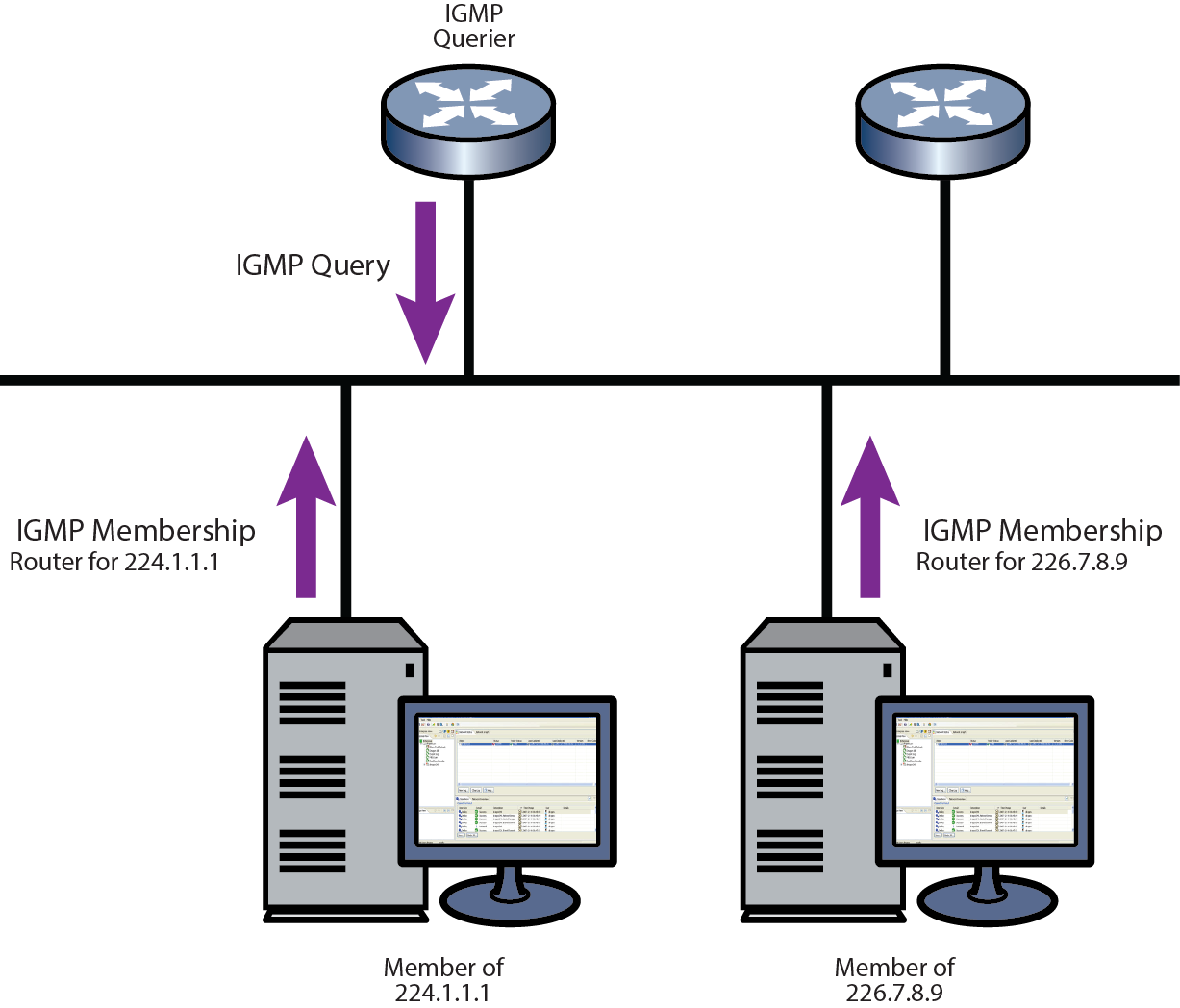Group membership management is fundamental to the multicasting process. An arbitrary group of receivers can express interest in receiving a particular multicast stream, regardless of the physical or geographical boundaries of its members.
The purpose of IP multicast group management is to optimize a switched network‘s performance so multicast packets will only be forwarded to those ports containing multicast group hosts or multicast switch devices instead of flooding to all ports in the subnet (VLAN).
IGMP uses three key components to control multicast membership:

As shown in IGMP Querier Determining Group Membership, a multicast query-enabled device can periodically ask its hosts if they want to receive multicast traffic. If there is more than one device on the LAN performing IP multicasting, one of these devices is elected querier and assumes the responsibility of querying the LAN for group members.
Based on the group membership information learned from IGMP, a device can determine which (if any) multicast traffic needs to be forwarded to each of its ports. At Layer 3, multicast switch devices use this information, along with a multicast routing protocol, to support IP multicasting across the Internet.
IGMP provides the final step in IP multicast delivery. It is only concerned with forwarding multicast traffic from the local switch device to group members on a directly attached subnetwork or LAN segment.
IGMP neither alters nor routes any IP multicast packets. Since IGMP is not concerned with the delivery of IP multicast packets across subnetworks, an external IP multicast device is needed if IP multicast packets have to be routed across different subnetworks.

Note
On VLANs where IGMP snooping is enabled, any received multicast stream will be flooded to the VLAN until such time as the IGMP database is populated, then stream forwarding will revert to ports with group membership only.
 Print
this page
Print
this page Email this topic
Email this topic Feedback
Feedback